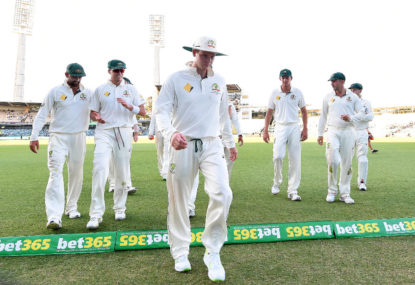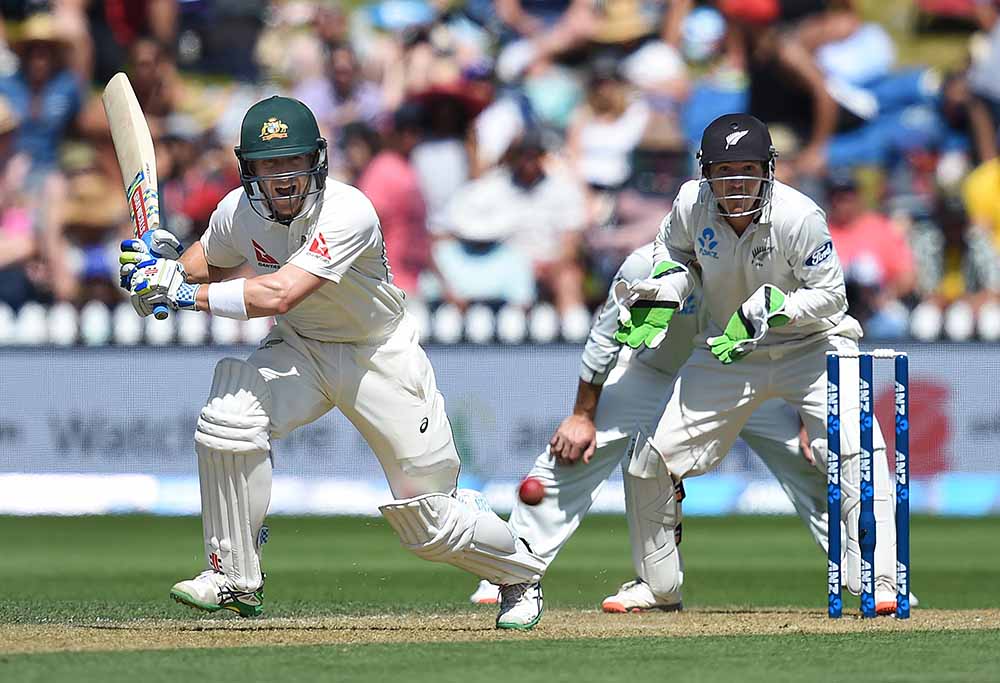'Big achievement': Jason Gillespie secures major appointment as Pakistan Test coach
Australian fast bowling great Jason Gillespie has been named head coach of Pakistan's Test team, as the nation overhauls its coaching department ahead of…

The recent Test loss to South Africa has exposed a worrying trend for Australia – their inability to dig in and fight out a draw.
Australia were sent in just before tea on day four with the unlikely target of 539 for victory. The only realistic outcome for Australia outside of a loss was to show some resilience and grind out the draw. Yet it proved beyond Australia as they were eventually bowled out late on day five.
Surprisingly the tail did show some resistance during the final day’s play. Unfortunately, the result had been decided late on day four when four top order wickets fell through unintelligent batting.
The most disappointing aspect of the capitulation was the fact South Africa were minus their number one strike bowler. The absence of Dale Steyn gave Australia a genuine opportunity to play for the draw.
David Warner’s runout started the rot and Australia never recovered. With the best part of four sessions to bat to save a Test match, what were Warner and Shaun Marsh thinking even attempting such a risky single? Steve Smith, Marsh and Adam Voges departed soon after attempting wild strokes away from their bodies at deliveries that could have easily been let go.
Given the tail batted so well on the final day and stretched the depleted South African attack. If the top order had a similar mindset the previous evening, a draw could have been possible and a significant momentum shift in the outcome of series. Why did the Australians not commence the innings with the mindset to survive until lunch on day five and reassess the state of the game?
In recent times similar opportunities to save a Test and demoralise the opposition have eluded Australia. In the first Test earlier this year against Sri Lanka in Kandy, Australia were unable to hold on as rain was imminent and previous days’ play had ended early for bad light. Sri Lanka were handed an unlikely win given their predicament earlier in the Test and were never headed for the remainder of the series winning 3-0.
Cardiff 2015 England set Australia an unlikely target of 412 for victory and heavy rain was forecast for day five. Australia went on to lose the first Test by 169 runs after being dismissed late on day four. When the rain did come on day five an opportunity had been lost and the momentum was lost as England went on to win the series and retain the Ashes.
Inflicting the indignity of settling for a draw on South Africa in Perth who would not have expected it could have psychological damaged the tourists for the remainder of the series. A look at recent history highlights how similar situations involving Australia have played out
In the first Test of the 2009 Ashes series England were on the ropes on the final day’s play and somehow held out for a draw. Jimmy Anderson and Monty Panesar, England’s last two batsmen, survived the last 69 balls to deny Australia a Test victory they had no business losing. The mental damage to Australia who missed the opportunity to go one nil up was significant and they never recovered. England were inspired after grinding out an unlikely draw and set in motion a series which England won 2-1 to regain the Ashes.

The second Test of the Australia and South African series in 2012 produced perhaps the greatest salvage mission ever perpetrated on Australian shores. South Africa led by Faf du Plessis were required to bat for four and a half sessions on a wearing Adelaide Oval pitch to salvage a draw. Australia were shocked and the bowling attack was shot to pieces.
Four days later in the series deciding Test match in Perth a makeshift Australian bowling attack were slaughtered by the energised South Africans.
The Australian team will say it is not in their nature to bat for a draw. This mindset was confirmed by the former skipper Michael Clarke in commentary in Perth who urged Australia to bat for the win. The cynic may say the mantra of always batting for the win is masking a deficiency to simply grind out long innings.
Given Australia has had more ten wicket capitulations in the past five years than any other Test-playing nation, the cynics may have a body of evidence to mount a successful prosecution. It doesn’t appear that defensive application interests Australia batsman.
Letting balls go, concentrating on nullifying the swinging or turning ball is nonexistent and constructing an innings by gradually wearing out bowling attack is not seen as a matter of importance.
If Australia had survived in Perth, the series would have a vastly different feel about it. It would be South Africa heading to Hobart on a four-day turnaround with an overworked bowling attack.